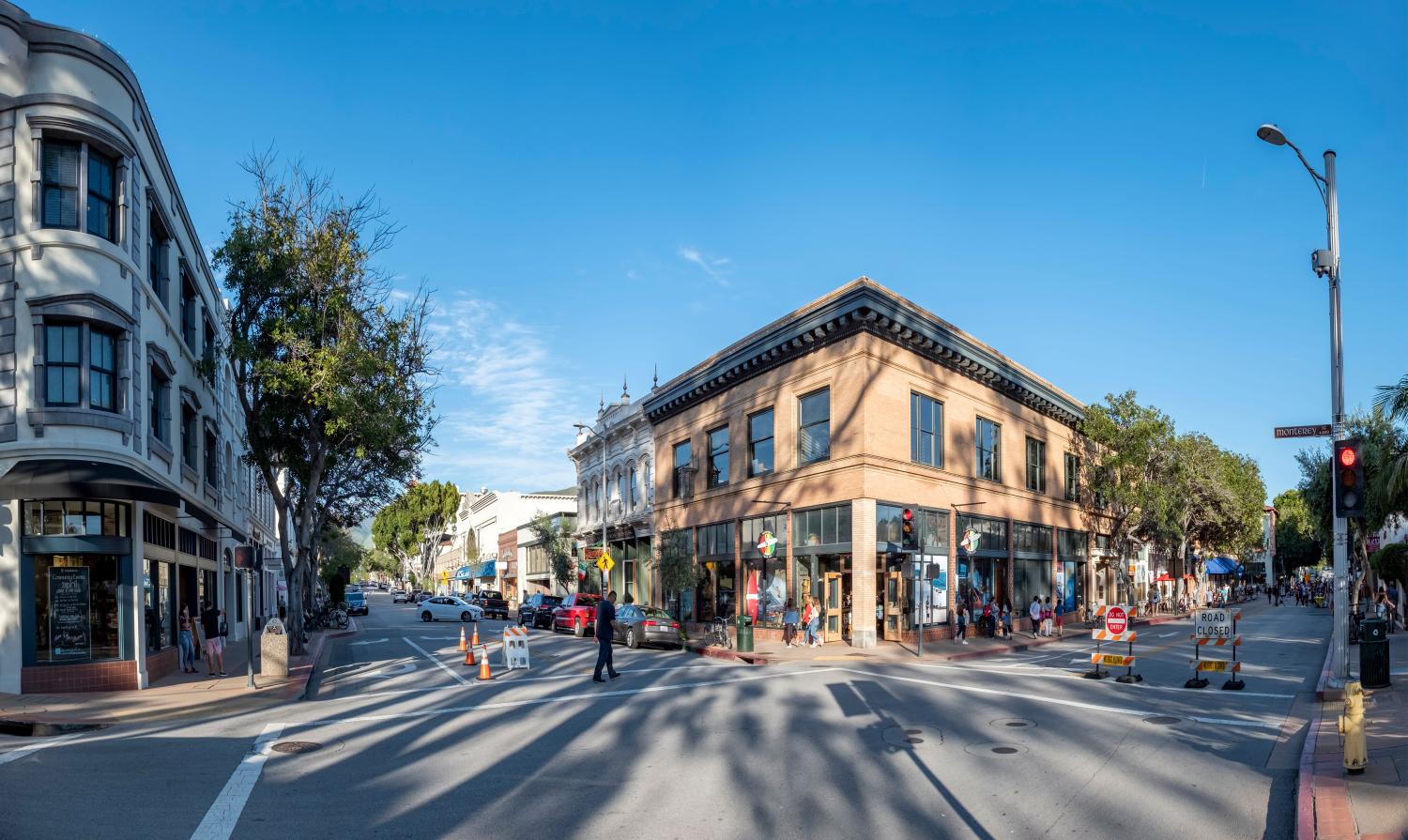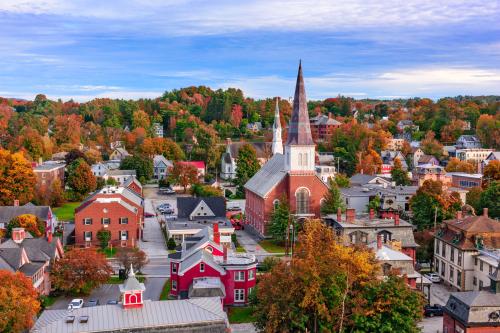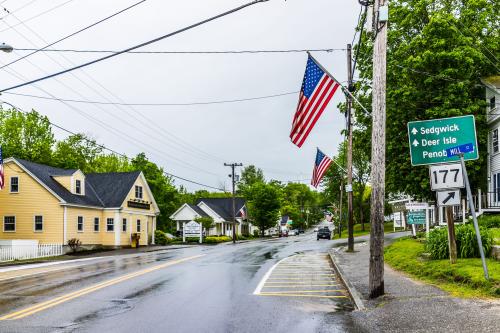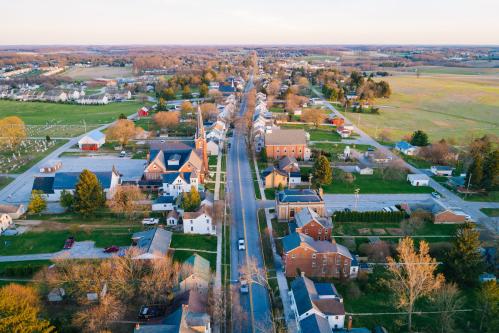Summary
- A new proposal from OMB would change the minimum core population threshold for metropolitan statistical areas (MSAs) from 50,000 to 100,000, bumping 142 metro areas that include 251 counties and nearly 19 million people into nonmetro status.
- The potential new nonmetro counties are larger and more prosperous than existing ones, significantly changing the character of that designation.
- Despite OMB guidance, many federal programs rely on the metro/nonmetro designations for policy and funding. At a time when government is focused on COVID-19 relief, economic recovery, infrastructure, and racial equity, small rural areas may be forced to compete with better-situated newcomers for federal funding.
1. BACKGROUND
On January 19, 2021, the Office of Management and Budget (OMB) announced in the Federal Register its intention to increase from 50,000 to 100,000 the population threshold for the core of a Metropolitan Statistical Area (MSA), opening a comment period that ends March 19. The shift was recommended by the Metropolitan and Micropolitan Statistical Area Standards Review Committee, an interagency committee of statistical experts within the federal government, after a two-year reexamination that occurs regularly in conjunction with the decennial census.
The MSA designation is part of a framework developed by OMB based on the concept of “core-based statistical areas,” or CBSAs. The CBSA scheme enables OMB to classify “metropolitan” and “nonmetropolitan” at the county level based on each county’s proximity to a densely populated urban “core.”
This is the first time a change has been suggested to the minimum population that qualifies as a metropolitan core since standard metropolitan areas were first delineated in the 1950 decennial census. The review committee’s rationale for doubling the population threshold is that the total U.S. population has roughly doubled since 1950, but it provides scant additional detail. With the government focusing on COVID-19 relief, economic recovery, and potential new investments in infrastructure and jobs, the implications of the proposal, especially for rural and lagging areas, demand further analysis.
OMB makes clear that the MSA standards are to be used for statistical purposes only, and that “nonmetro” is not meant to define “rural.” However, contrary to OMB’s guidance, many federal programs and policies rely on the MSA when determining funding, financial incentives, and targeting, and “nonmetro” is often used as proxy for “rural” by media, policymakers, and practitioners.
As of Thursday, March 18, the proposal had already resulted in 405 total comments on the Federal Register. In addition, a sign-on letter that grew out of a small roundtable of rural experts that we co-hosted with colleagues at the Community Strategies Group of the Aspen Institute has received more than 430 signatures.
2. WHO ARE THE POTENTIAL NEW NONMETROS, AND HOW WOULD THEY COMPARE TO THE CURRENT SET?
Based on 2010 census data,1 the change would drop 142 MSAs comprised of 251 counties from metro to nonmetro status, excluding territories, impacting just under 19 million people.2 This adds to the current count of 1,963 nonmetropolitan counties (excluding territories), which account for approximately 14 percent of the U.S. population. The recommended change would raise the total number of nonmetro counties to 2,214 (excluding territories), increasing nonmetro to approximately 20 percent of the U.S. population.
We analyzed these counties using the Economic Innovation Group’s 2018 Distressed Community Index (DCI) data, which uses American Community Survey 2014-2018 five-year estimates across several demographic, economic, and social indicators, classifying counties into five categories ranging from “distressed” to “prosperous.”3 The newly designated nonmetro counties range from places of just over 1,000 people, like the ranching and oil terrain of Sterling County in Texas, to San Luis Obispo County in California, with a population of over 281,400—but which doesn’t have an urban “core” over 100,000. The median and mean population size for the new nonmetros are both about 75,000 people.
How would the newcomers compare to the current suite of nonmetro counties?
We examined how the changes will impact the statistical conception of metropolitan and nonmetropolitan areas. The “newcomer” nonmetro counties are:
Larger
- On average, the reclassified counties are significantly larger than existing nonmetro counties, with a mean population of 75,533 versus 23,240.
- The addition of the 251 reclassified counties to the nonmetro pool will raise the average population of a nonmetro county from 23,240 to 29,196: a 25.6 percent increase.
More prosperous
- The newcomers also generally fare better on socioeconomic indicators than existing nonmetro counties. Collectively, they have a lower average poverty rate, a higher percentage of their population in prosperous zip codes, and a lower percentage of adults lacking a high school degree (Figure 1). These counties also have a lower percentage of adults not in work and experienced greater rates of employment and establishment growth between 2014-2018. They rank better on the DCI, with the group average falling into the “mid-tier” category while current nonmetro counties tend to fall between “mid-tier” and “at risk.”
 Demographically, about the same
Demographically, about the same
- Of the 251 reclassified counties, 35 are communities of color, defined as having a non-Hispanic white population of less than 60.1 percent. These account for just over 3.1 million people, or 16.5 percent of the total population in the possibly reclassified counties. Of the 1,953 current nonmetro counties we analyzed, 360 are communities of color, accounting for 17 percent of the population in the current pool.
- The addition of the reclassified counties to the nonmetro pool will keep the overall percentage of communities of color stable at 17 percent of nonmetro rural residents.
- The change will result in slight increases in the Black and Asian/Pacific Islander nonmetro populations, but generally, the change will add a new cohort of majority-white, relatively prosperous communities to the nonmetro pool.
3. IMPLICATIONS
This proposed change in population threshold to the MSA delineation standards is likely to have significant ramifications on several fronts. It:
Shifts conceptions of urban and rural identity
Raising the minimum core metropolitan population to 100,000 will redefine what it means to be “metro” and “nonmetro” in today’s America. In 2003, OMB began using the term “micropolitan” to designate the portion of larger nonmetro areas with an urban core of 10,000-50,00 people.
Figure 2. OMB’s current core-based statistical area (CBSA) delineation scheme
The CBSA delineation scheme separates counties into 3 groups, 2 of which are considered “nonmetro”
 Source: Authors
Source: Authors
The new standards would raise the upper bound of the micropolitan range to 100,000 while keeping the lower bound at 10,000, expanding the range and significantly growing the micropolitan subset of nonmetro counties. It raises the question of how community leaders currently designated as metropolitans will respond to being reclassified as micropolitans—and whether they will see it as a downgrade, creating a perverse incentive to reach the 100,000 threshold to regain metropolitan status, especially if they lose access to certain types of federal support or targeting.
For example, the Department of Transportation (DOT) makes funding available for highway and construction planning to urban areas of 50,000 or more based on plans developed by their local Metropolitan Planning Organizations (MPOs). Current MSAs that are downgraded to micropolitan status will need to adapt and coordinate instead with their state DOTs or regional MPOs, which could be detrimental to smaller metropolitans where local MPOs provide valuable transportation planning and assistance to their regions. As Congress contemplates new investment to restore deteriorating infrastructure across the country, the practical, locally felt consequences of the review committee’s proposal could be challenging.
Depending on how places seek to accelerate growth, the change may work against the sustainability objectives that the Biden-Harris administration is so vigorously pursuing. Given that both micropolitans and smaller nonmetro counties are often lumped together into the umbrella term “rural” in research and policy analysis (with “micropolitan” as a proxy for “small town”), a significantly larger micropolitan cadre challenges current perceptions of rural identity—and calls into question rural realities.
Establishes urbanization as a relative measure
The proposed changes would also set a precedent that the metropolitan delineation is a relative measure. Under the current standards, about 14 percent of the population lives in nonmetro areas; under the proposed standards, this figure would jump to about 20 percent.
This has the effect of reweighting America’s metro and nonmetro populations—akin to rebalancing an investment portfolio in which stocks have grown more rapidly than bonds. Yet the recommendation provides no empirical, scientifically sound formula nor explanation for what will trigger future threshold increases, nor how they should be calculated, leaving future changes open to political manipulation. Changing the threshold also creates a break in series, posing significant complications for longitudinal statistical analysis and tracking rural realities over time.
There is no explanation of whether other options were considered. For example, why push locales into nonmetro status instead of subdividing urban areas into metropolitans and “mega-metropolitans?” The recommendation also conflicts with an endorsement in March 2020 by the United Nations Statistical Commission (the global forum of national statisticians in which the U.S. chief statistician participates) of a standard to facilitate comparative analysis among countries, using 50,000 as the threshold for an urban center.
Deeper analysis and further consultation with external experts would ensure consideration of the full range of statistical implications, deepen the scientific basis for proposed changes, and shape guidelines for reviewing the standards in the future.
Impacts federal funding and program administration—with the full scope unknown
Despite OMB’s insistence to the contrary, federal programs often use the MSA standards to set eligibility requirements, allocation formulas, scoring criteria, and several other dimensions of program administration. The impact of the proposed change in MSA size on these programs has not been fully analyzed nor is it well-understood, and in some cases could be significant.
Previous federal attempts to evaluate the impact of changes to MSA standards on program administration, while helpful, are incomplete. In 2004, the Government Accountability Office (GAO) examined the impact of proposed changes to the 2000 MSA standards on four federal programs, finding that they increased eligibility in some cases and had no effect in others. In 2014, Congress asked the Congressional Research Service (CRS) to analyze the full implications for federal programs of MSA delineation changes. CRS did not even provide a list of programs affected, let alone a financial analysis, responding instead that “The process would entail a considerable, recurrent investment of resources, and even then, might yield incomplete results of limited utility.”
However, one can easily point to specific examples of federal programs that are likely to be impacted by any change to the MSA standards. The Department of Health and Human Services (HHS), for example, uses the MSA classification to tier reimbursements for Medicare services, offering hospitals higher reimbursement rates for inpatient operating costs in metro areas where wages are higher, while granting ambulances higher reimbursement rates in nonmetro areas.4
The Federal Housing Finance Agency also uses the MSA classification to inform its “Duty to Serve” program, which requires Fannie Mae and Freddie Mac (government-sponsored enterprises or GSEs) to facilitate a secondary market for mortgages in rural areas. Since “rural” is defined by the program using the OMB metropolitan and nonmetropolitan designations, GSEs could potentially meet their rural assistance targets through activity in larger newcomer micropolitans, to the detriment of smaller, potentially less prosperous areas.
For certain programs, remote rural areas with limited capacity may now have to compete with larger, better-resourced towns for the same pool of limited funding, to the chagrin of existing and newcomer nonmetros alike. For example, local leaders from Wasau, Wisconsin to Rapid City, South Dakota have expressed concern that their reclassification to micropolitans might result in lost entitlement funding reserved for metros through the U.S. Department of Housing and Urban Development’s (HUD) Community Development Block Grant (CDBG) program, shifting them to compete for non-entitlement CDBG funds managed by the states—which would also create more competition for smaller rural areas as they attempt to access some of the most flexible federal dollars available for their social and economic development.
4. CONCLUSION
The proposed change is potentially so significant, and the statistical and financial consequences too insufficiently understood, for OMB to make an informed decision. The nation stands at the precipice of a major effort to recover from the economic and social impacts of the COVID-19 pandemic, while renewing investment in infrastructure, accelerating action on climate change, and dismantling the legacy of racism. Now is not the time for arbitrary action that challenges perceptions of fairness and community identity.
The MSA delineation has been tweaked and changed in a piecemeal fashion throughout the past several decades. While increased urbanization may be one consideration when reviewing the delineation, changes must be based on a clear, sound, scientific rationale that comprehensively considers how all dimensions of the delineation fit together to reflect metropolitan and nonmetropolitan status. The rationale should be able to stand the test of time, and the financial impact—both on local governments and institutions as well as federal expenditures—should be well understood before any change is made.
We suggest that OMB not act on this recommendation, and instead convene a comprehensive review of the MSA delineation with external experts and stakeholders. One option suggested by others is to launch a process through the National Academies of Sciences, Engineering, and Medicine; we would add the National Academy of Public Administration, given their capabilities in addressing government management challenges. Rural experts, stakeholders, and practitioners must also be consulted at every step of the process. Too much is at stake—and unknown.
-
Footnotes
- The change in designation would not occur until 2023, so the actual shifts will be based on 2020 census population counts, which may change these numbers slightly.
- The Yauco and Guayama MSAs in Puerto Rico will also be affected, but are not included in our demographic analysis
- EIG DCI excludes territories plus counties under 500 residents, as well as Rio Arriba County, New Mexico, and Wade Hampton Census Area, Alaska. We analyzed the remaining 1,963 non-metros under the 2010 MSA delineation standards and the 251 counties that would be reclassified from metro to non-metro under the proposed 2020 standards.
- See 42 CFR § 412.64 and 42 CFR § 414.601-626
The Brookings Institution is committed to quality, independence, and impact.
We are supported by a diverse array of funders. In line with our values and policies, each Brookings publication represents the sole views of its author(s).








